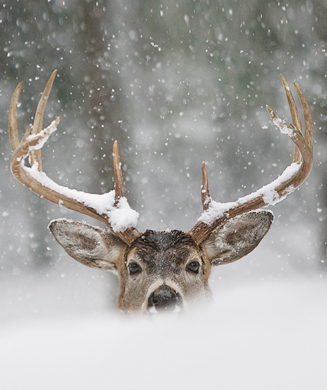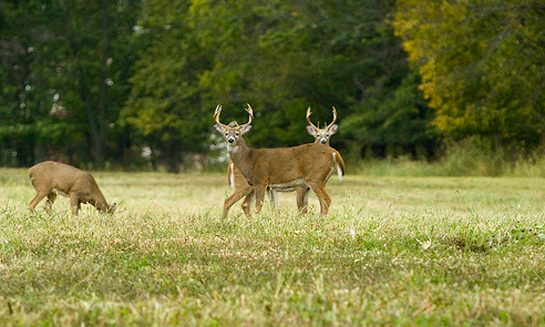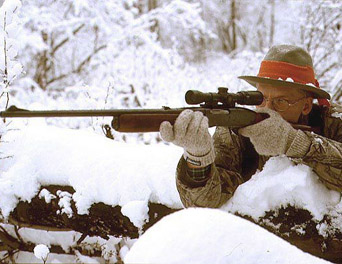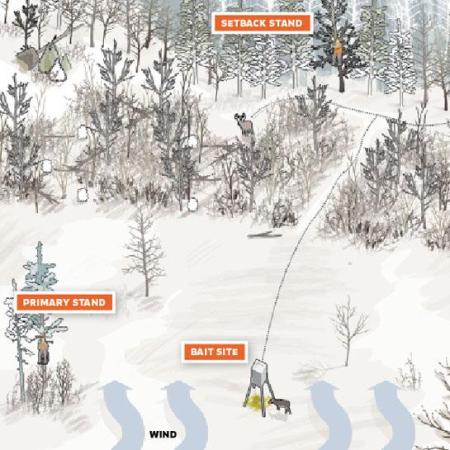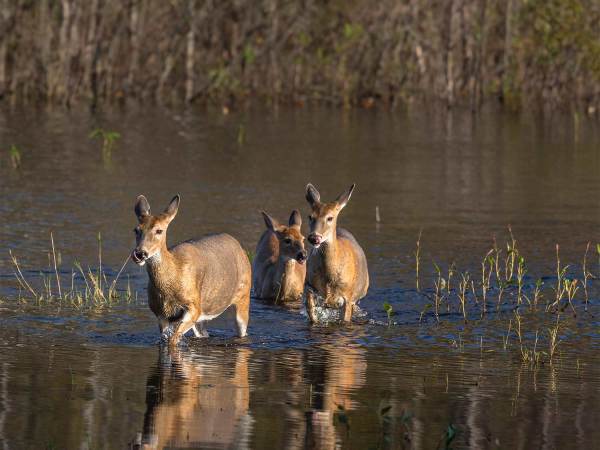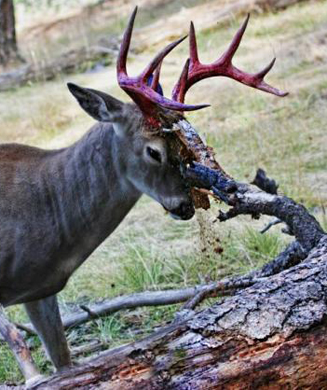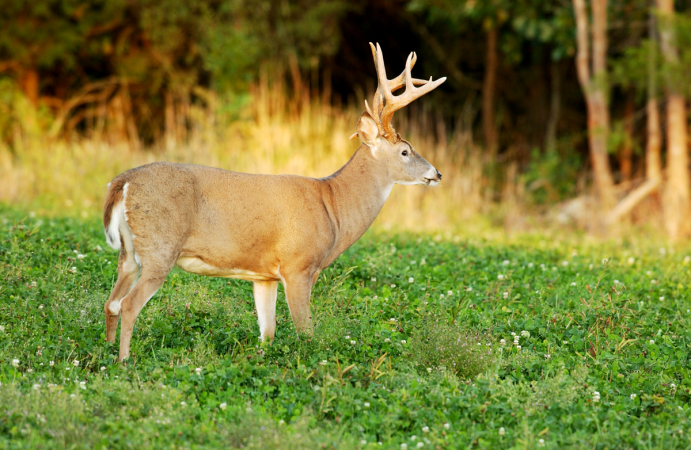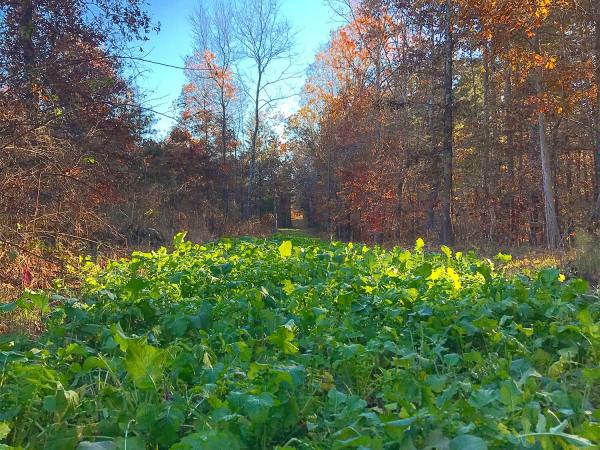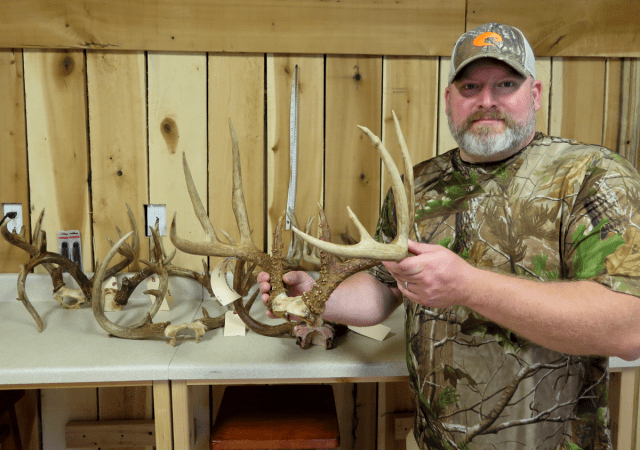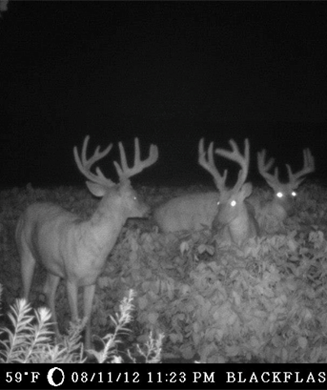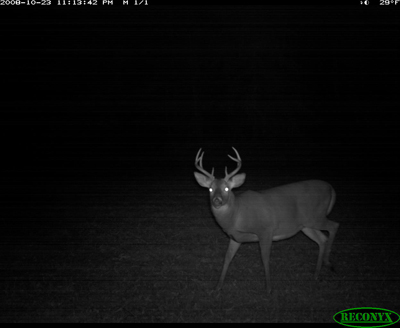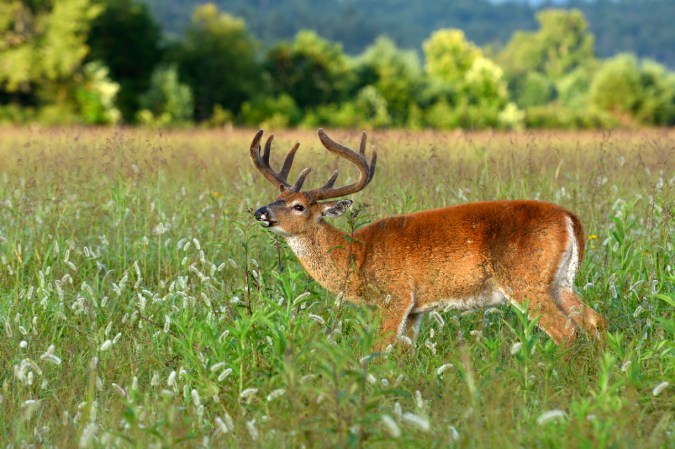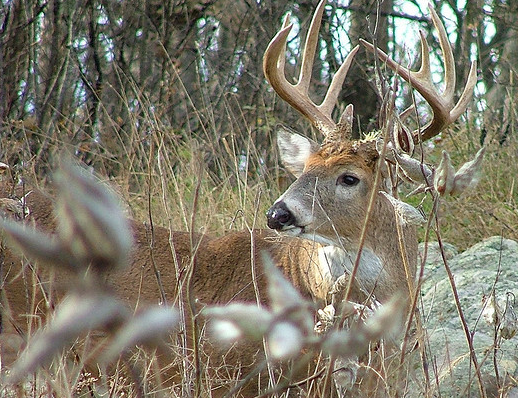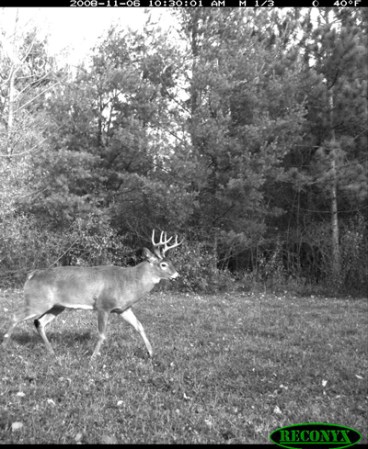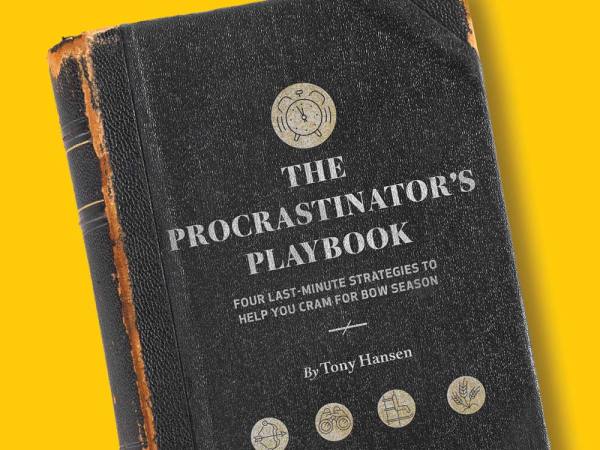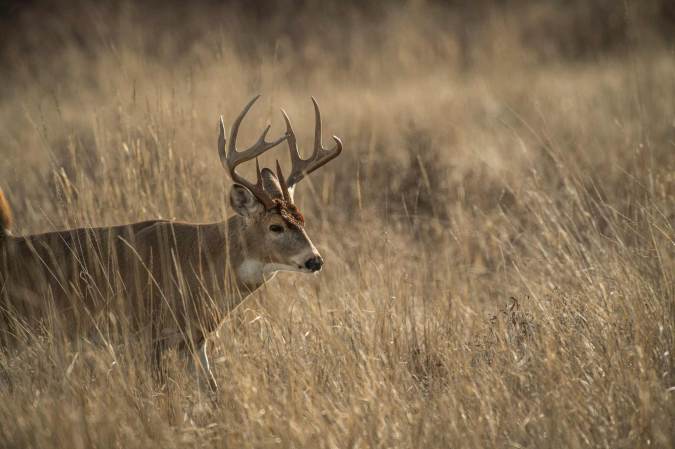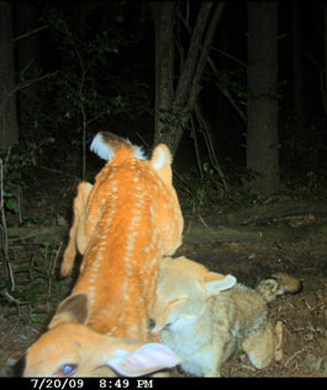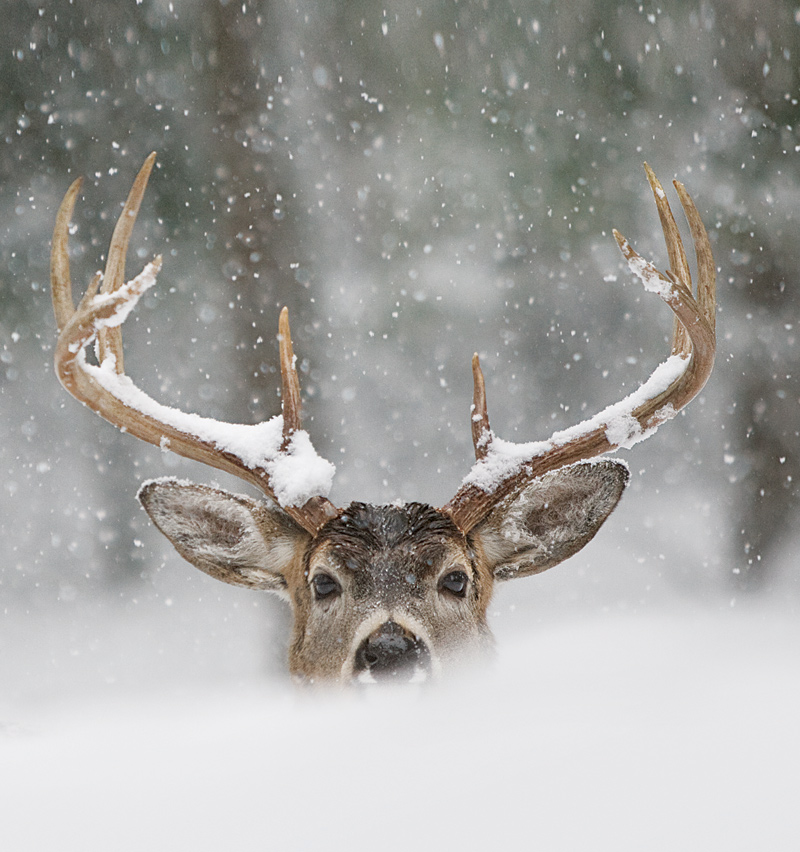
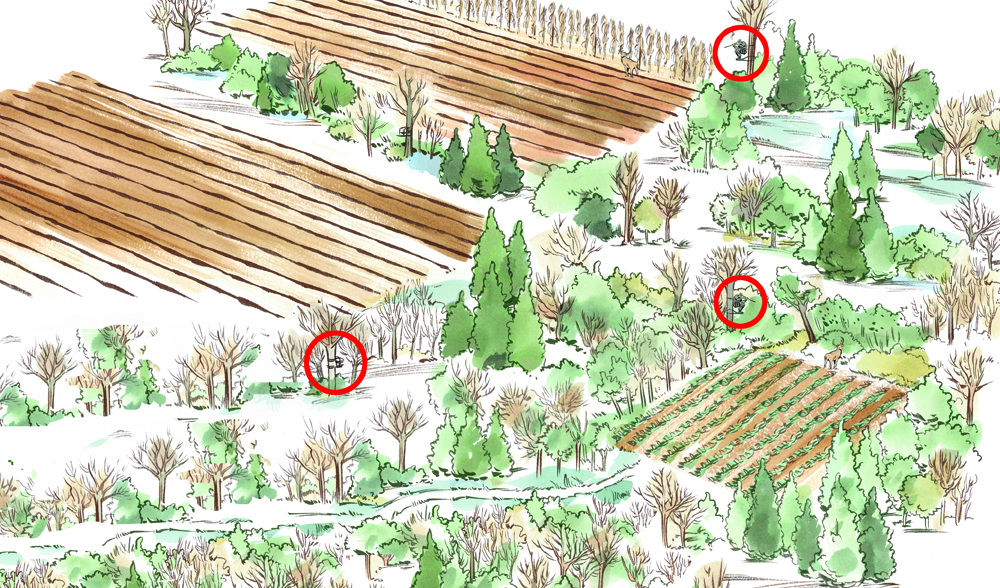
The Scenario: The craziness of the rut is over and a buck's attention is back on food. He needs to recuperate from the rut and prepare for the approach of severe cold. Unfortunately, drought in the Midwest wiped out crops. The corn normally left standing to provide both food and shelter for whitetails at this time of year is gone; so are any of the kernels left from a normal harvest. Hunters who typically hunt cut fields will come up empty-handed now and in future years when this occurs. The Solution: Move stands to spots still capable of producing food (blue circles; orange circles denote traditional stands that won't work this season). With rain finally coming to much of the Midwest in early September, hunters who planted fall food plots with late-season draws like brassicas are going to have a leg up. "The guys who put the effort into fall plots could be the guys who score big this season," says Intrepid Outdoors co-host Adam Hays. "They'll have the best–maybe the only–food around." Hang stands between an available plot or natural food and the nearest bedding cover. Deer are weary and pressured now, and will take the most direct route between the two. If you have a food plot adjacent to thick cover, leave the area alone until the time is right. Wait for an approaching front or significant temperature drop, then slip in and spend the day there. Don't miss the middle of the day. For the last two years, as the season got later and colder at my farm in Virginia, plot cameras revealed increased activity between 11:30 a.m. and 2 p.m. John Kilgo, a research wildlife biologist with the U.S. Forest Service, particularly likes a gray, drizzly midday hunt to catch late-season deer on the move.
If you didn't plant any brassicas, wheat, or beans for late fall, consider doing so in the future; these extreme weather patterns could be here to stay. For now, Kip Adams, with the Quality Deer Management Association, recommends finding where acorns were earlier and setting up in those areas. Deer will revisit them, pawing at the leaf and snow cover in search of remaining nuts.
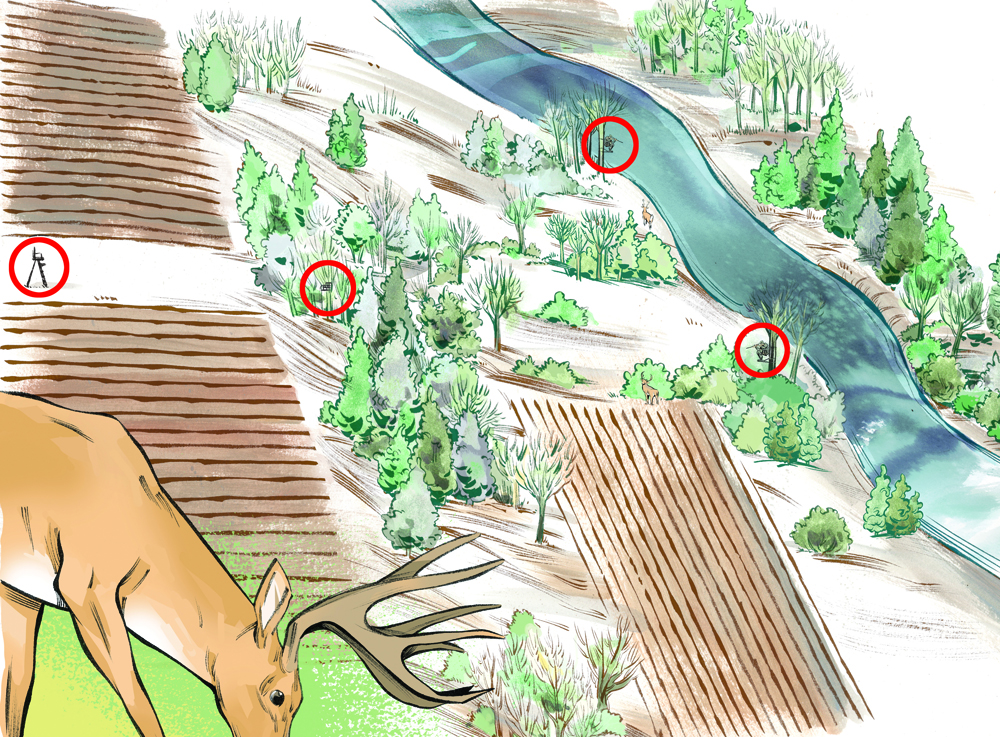
The Scenario: In areas where the drought punished crops and kept the greenery wilted throughout the summer, the one place with enough water to help food sources (including some agriculture) is along river bottoms and large creek bottoms. The fields in surrounding hills or above the bottoms likely suffered the same fate most crops did, which also means the deer abandoned those areas early and are probably hanging tight to where the food is more plentiful. The Solution: Don't waste your time on barren fields or dried-up, failed warm-season food plots beyond the reach of the historical high-water mark. With food the focus of a buck's mind, he will return to the edibles and cover adjacent to the water flow. Crop fields here are more apt to still have some waste grains. Natural browse, including soft and hard mast, will have survived better in the bottoms as well. Deer will work well-traveled trails along the water's edge. Hang your stand on one of these trails where it runs through heavy cover or intersects a pinch point between the river and an opening, such as a field, plot, or even a steep embankment. Deer will move through here to feed just as they did during the early part of the season.
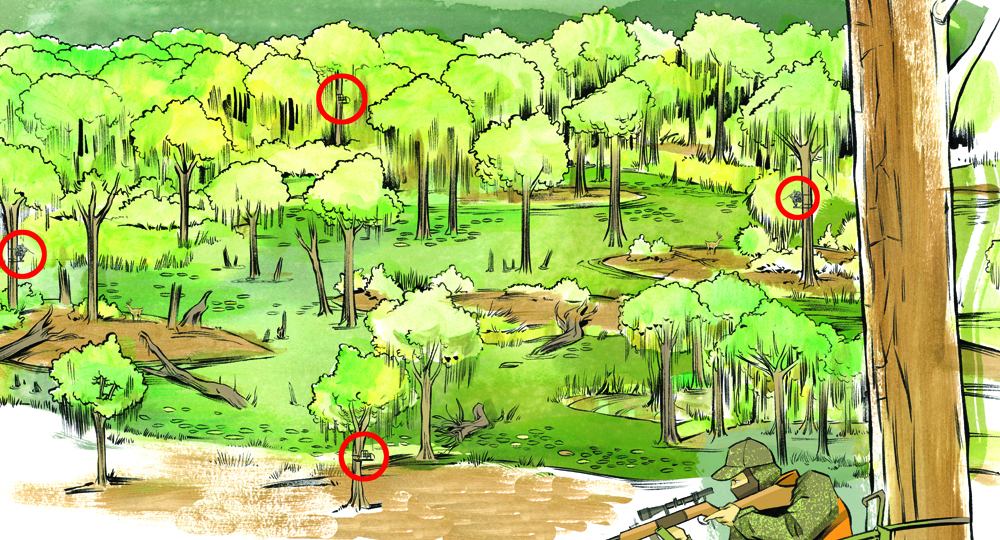
The Scenario: Warm weather that lingers well into hunting season, when deer are sporting winter coats, will keep whitetails hot and moving little except at night. Hunting pressure will only increase the deer's tendency to go nocturnal. And nowhere is this situation more pervasive than in the South, where lengthy seasons and perpetually warm weather can put bucks on lockdown in the weeks following the rut. The Solution:The one place bucks will find both protection from hunters and relief from the heat, thanks to the water there, is in a swamp. But don't waste your now-precious time hunting the edges. Deer go deep into the thick stuff to dodge the hunting pressure this time of year, so you have to get in there, too. My usual late-season garb when hunting my Virginia farm includes sturdy chest waders. I also sometimes utilize a kayak to quietly traverse the deeper stretches of water. Locate thick, brushy high spots or islands within the swamp, particularly where shallow water makes for a natural crossing. This is where you want to set your stands. If there are white oaks–or any oaks, for that matter–that dropped acorns earlier in the season, a lot of remnant nuts may still be floating in the water. Deer will hit these just as wood ducks do. The key to success in swamps is to get to these spots early, both in the morning and in the evening, as deer will move through them after feeding on higher ground before dawn. They'll be on the hoof to stage here before leaving the swamp to feed at night, too.
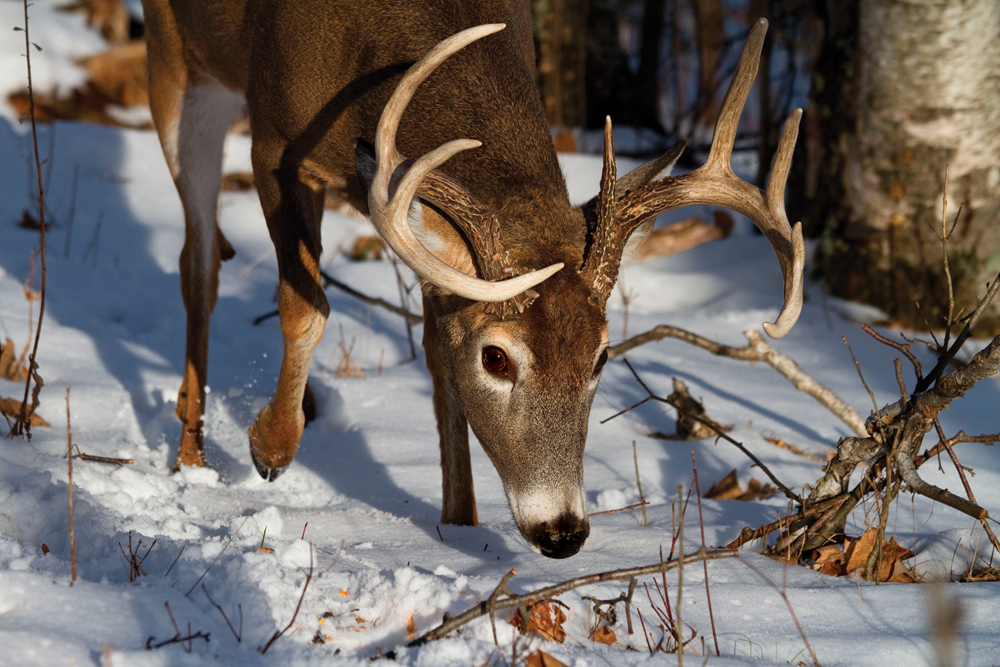
The Scenario: Unseasonably warm weather fooled apple trees into blooming early this year in the Northeast, but a serious late frost killed the blossoms, meaning this year's apple harvest has been devastated. Land management and whitetail expert Craig Dougherty, who runs North Country Whitetails with his son, Neil, says cherries, pears, and persimmons were all affected too. So hunters who focus on orchards, particularly in the late season, when the sweet fruits draw deer like magnets, will have to look elsewhere this winter. "That food source is gone," says Dougherty. The Solution: Dougherty agrees with Adam Hays' assessment that hunters who took the time to plant turnips, winter peas, beans, and other late-maturing plants in the Northeast will also be the likely winners in attracting deer as temperatures begin to plummet. Barring that, natural browse, such as hawthorn or acorns where they can be found, will also attract hungry whitetails. Don't overlook other types of soft mast. Blackberries, raspberries, pokeberries, and even dogwoods should all provide the soft mast deer relish, says the QDMA's Adams, so pull your stands from the orchard edges and retreat to the forest in search of these natural food sources if you don't have food plots. The important thing is to find the foods and then plan your approach, being cautious not to blast through likely bedding areas. Deer will bed close by to limit the amount of moving they need to do, so you have to slip in as if you were on a stalk.
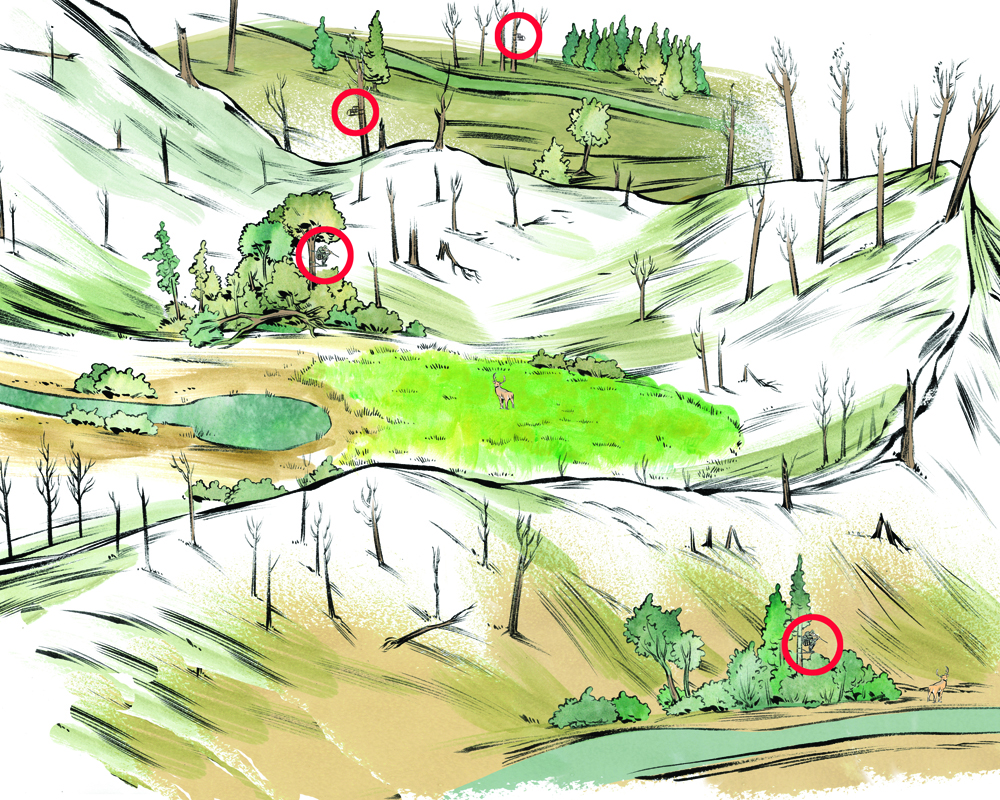
The Scenario: Areas hit by forest fires can be devastating for residents, render the terrain an ugly mess, and even lead to long-term environmental problems like erosion. Fortunately, few game animals actually perish in these fires; however, fire will push them from the area until it begins to recover. The Solution: Plants are among the first living things to return to a burned-out area, with deep-rooted forbs and grasses springing back to life often within 4 to 8 weeks–quicker if rains also return. Because the infrastructure and soil may be unstable following a fire, some public areas might remain closed following a blaze. Once your favorite spot reopens, late-season hunting pressure there might not be as bad as in normal years.
Scout the burn and look for areas where plant life returned before the growing season ended. These spots most likely brought hungry deer back into the area. Next, identify pockets of cover that escaped the blaze–most wildfires often skip entire patches of land and leave a mosaic of existing browse. The most likely spots in which to find unburned land are in deep canyons or draws where fire didn't reach the bottom, particularly in the heads of protected draws or along rivers or streams. The lower portion of leeward slopes might have also retained some vegetation, since fires tend to run with the wind and burn better uphill than down. Forget scorched saddles or areas where there is neither cover nor browse and focus on those untouched areas, no matter how small. Deer will congregate in the limited cover, making the areas easy to scout from a distance and just as easy to hunt once you identify where a big bruiser is holed up. Slip in along a ridgetop overlooking the cover, keep the wind in your face, bring some shooting sticks, and be ready.
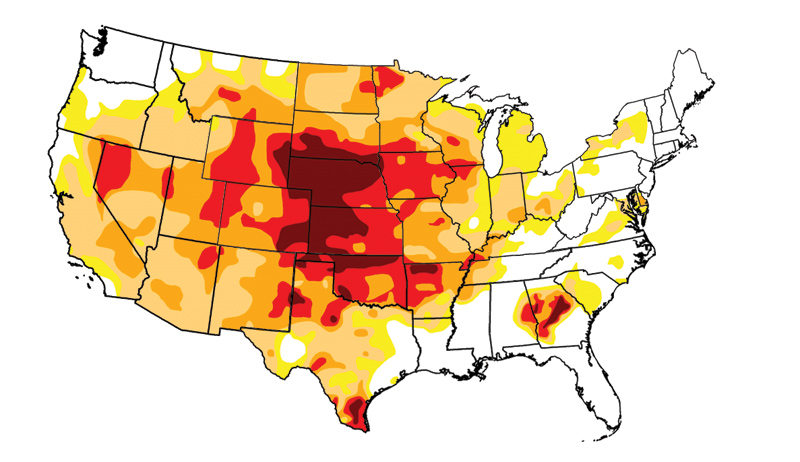
Pictured: Drought Severity Index as of Oct. 2 So what lasting impact might the drought and EHD outbreaks have on future deer seasons? If deer herds prove to be stressed and a more normal winter returns to the eastern half of the country, then weaker animals could die off. And while most experts agree that we're likely to see increased droughts in the coming year, hunters with the land and the means–and where legal–should consider initiating supplemental feeding during the summer, followed by the planting of cool-season plots in late summer to create more deer-attracting food. Of more concern are the areas hit hard by EHD. Grant Woods suggests that some hunters, frustrated by not seeing bucks the size they anticipated, might resort to shooting smaller bucks, which will further harm the age and trophy structure of the herd. "Whether they're shooting bucks or does or both, hunters need to be careful," says Craig Dougherty. "Depending on how bad EHD has hit their area, they may be shooting the last few deer on their place. Hunters need to be vigilant. They can't go by statewide estimates. Biologists don't know your property like you do." In other words, if you're seeing few deer, you may need to revise how many deer you plan to harvest from your land. Fortunately, no matter how bad the EHD outbreak turns out to be, affected deer populations should bounce back quickly. "It's not the end of the world. EHD has been around forever. It's always been a part of the whitetail's world," says Woods.
In a year with more than its share of unusual climatic and environmental events, late-season deer hunting is going to require alternative strategies.
